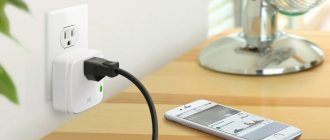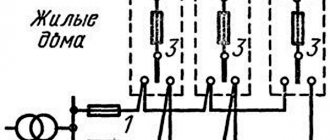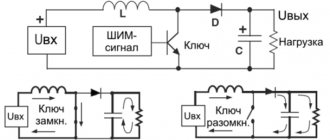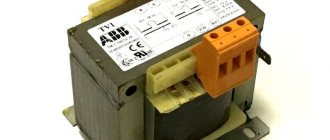What does the concept of a smart home mean?
The key idea of a smart home is considered to be automatic control of various elements in the apartment. For example, automatically turning off the lights when no one is in the room for a long time or shutting off the water supply in the house when a leak is detected. And, for example, a smart socket with a temperature sensor can turn on the heater when the temperature in the room drops. This system is designed to increase the security of your home and optimize various electrical networks to improve comfort.
You can also read the review of smart extension cords
Basic faults
If the power indicator is not lit, then this indicates that there is no external power. In this case, the device automatically switches to manual mode. Other common problems include:
- Frequent blinking of the GSM indicator for a long time. The lack of signal may occur due to the fact that the SIM card that is inserted into the network is not found or there is simply no signal.
- Functions are blocked. Check if the AOH mode is disabled or top up your SIM card.
- The socket does not respond to SMS commands. To do this, turn the outlet on or off. If necessary, you can simply reset the settings.
How smart plugs work
The socket mechanism is usually built on a relay; when a signal is received, the relay changes its position and either begins to transmit current or stops. Previously, a SIM card was needed to control a smart socket and to turn it off or turn it off it was necessary to send an SMS or call. Now control occurs using wi-fi or bluetooth, using a regular program on a smartphone. Now there are smart sockets with a temperature sensor; they allow you to monitor the temperature in real time and adjust the operation depending on the indicators.
DIY installation from your phone
To install a homemade socket you will need a relay and a control unit. The function of turning the outputs on and off will be performed by a relay. The decoder will signal the completion of the task. To power the output of the socket, you need a diode rectifier with a 24 V capacitor. The receiver will be the usual, simplest phone model (model for calls and SMS), as an alternative, you can use a receiving device that has a decoder.
The circuit works as follows:
- Relay installation. When connecting, the polarity of the voltage signal at the cell phone output is checked. The vibration mode simplifies the operation of the circuit.
- When a vibration signal arrives, the relay opens the transistor open, then the main transistor, which powers the capacitor from the device, thanks to the relay winding.
- The switch turns on one of the pairs of relay coils that make contacts. These contacts turn the electrical circuit of the electrical outlet on and off.
- After the end of the vibration pulse, the switch is set to the initial position.
- When the vibration signal is repeated, the switch activates the second coil and the circuit opens.
Image of a homemade connection diagram using a regular telephone, a switch with a decoder and a relay
Why a smart plug is useful and its functions
A smart socket allows you to not only turn on the kettle while lying in bed. The main advantage is the ability to customize the operating time. For example, set up an irrigation system that will water the plants for 15 minutes, morning and evening. Or set up an external lighting system so that it turns on independently in the evening and goes out in the morning. And if you are not sure that you turned off the iron, then simply turn off the socket itself via your phone without leaving your workplace. And in places where it is not possible to connect to the Internet, a smart socket with a SIM card is used, which also has a temperature sensor installed.
How to use
For proper operation, only GSM SIM cards are installed in the devices. Before installing the card, check whether the SIM card is active.
When using, be sure to maintain low humidity in the room. Metal objects are not allowed near the installation site, as this degrades signal reception by 2-3 times.
You cannot connect equipment that has a power of more than 3.5 kW. The voltage in the electrical network should be 220 V. When connecting to electrical appliances with a power of more than 1500 W, grounding is required.
It is prohibited to install such sockets in the following places:
- hospitals, hospitals, as well as premises where medical equipment is installed;
- in areas where the use of mobile phones is prohibited;
- in rooms where explosive substances are stored.
The device responds to commands sent only from several numbers that are stored in its memory. This restriction ensures that only the necessary subscribers receive information and excludes unauthorized access.
At the end of its service life, the device is disposed of as solid household waste.
A weak GSM network signal at the place of use leads to limited functionality of the outlet. Before use, make sure that the installation is in an area with a stable signal.
When purchasing a GSM socket, pay attention to the following characteristics:
- Battery capacity. As a rule, most models are equipped with a lithium-ion battery, which is designed for uninterrupted operation for 12 hours. If there is a power outage, the battery will prevent the device from turning off.
- The number of phone numbers to which messages are sent. There are devices on the market that support one and two SIM cards. The second option is more convenient and reliable.
- Rated load power per channel. The optimal power is considered to be at least 2 kW.
- Number of switched channels. The more there are, the better for the user. The number of devices available for control directly depends on the number of channels.
- Availability of additional functions. Hints, remote reboot, voice control, electronic indicators, etc. make using the outlet much more comfortable.
Types of devices
There are two types of devices: overhead and built-in. Overhead sockets are sockets that are inserted into an existing connector. And built-in ones are installed during the renovation stage and look similar to standard sockets. And they also highlight the control method and the number of sockets in one system.
Overhead pros and cons
Among the poles we can distinguish:
- The ability to install a similar smart socket in an existing one;
- Mobility, if necessary, you can easily move the device to another more convenient place.
The disadvantages include:
- Dependence on signal quality; in a country house, due to a poor signal, remote control becomes impossible;
- Due to its small size, the device cannot always be conveniently positioned, or it will spoil the appearance of the room;
- For GSM sockets, you must constantly monitor the balance of the installed SIM card.
Built-in smart sockets
There are two types of embedded devices. Installed directly into the wall, just like conventional sockets, or this is a system built into an electrical panel.
Best GSM socket ZDK GSM SC-1 White
The name of this outlet indicates the presence of a GSM module, which is responsible for remote control of the device. In addition, in the panel of the device you can see a slot for a SIM card. Power management can be carried out via SMS commands or a mobile application. Typically, the product is used as a smart home controller: it provides control of household appliances, doors, gates, surveillance cameras, lighting, etc.
- maximum power – 2 kW;
- overall dimensions – 40x25x15 mm;
- operating voltage – 210-230V;
- AC frequency – 50-60Hz;
- Average cost – 2500 rubles.
Smart wifi plugs
Devices operating via Wi-Fi have become especially popular. Let's consider what ensures the popularity of this type of product.
How the device works
The operation system is carried out thanks to the built-in wi-fi module. The device connects to the router. The setup is carried out using a program on your smartphone. This method allows you to combine many devices into one system. Smart plugs with a temperature sensor are also common. It allows you to monitor the temperature in the program and configure the operation of the outlet based on temperature readings.
Model overview
The most common device.
- HS100 – Manufacturer: TP-Link. Has a time-based operating mode;
- HS110 – Has the same operating modes, but also monitors the amount of electricity consumed. And it provides both statistics and real-time indicators.
Differences and types of devices
The main difference between such devices will be their maximum load indicator, that is, the power of electrical appliances that can be connected to an outlet. There are both simple options on sale that can control indoor lighting and low-power electrical appliances, as well as high-performance controllers that can handle the operation of industrial equipment.
When choosing a GSM device, you need to pay attention to the following characteristics and functionality of the device:
- Indicator of the rated load per channel.
- Number of switching channels.
- Battery capacity.
- Number of supported phone numbers.
- Additional features including remote overload and voice control.
The battery capacity, which ensures uninterrupted operation of the device even during a power outage, for the best models is 1000 Amperes, which is equivalent to 12 hours of operation of the gadget without electricity. Inexpensive sockets from Russian and Chinese manufacturers may not have additional batteries, which somewhat limits the possibilities for their use.
Models equipped with a wireless data transmission module are popular on the market, which allows you to install an application on a smartphone or tablet and control the operation of various household devices using a mobile gadget. The homeowner has the opportunity to configure the timer of a smart GSM socket from his phone, and receive other technical information that significantly expands the capabilities of such devices and increases the ease of use.
In each specific case, the choice of controllers must be made based on their subsequent operating characteristics. If you need to choose the simplest models for controlling a heating convector or turning on a light, then you can purchase an inexpensive socket without a battery, equipped with only one temperature sensor. But if you plan to connect several energy-intensive devices to the device at once, then you should choose models with a maximum power rating and a large number of switched channels. Accordingly, its cost will depend on the functionality and manufacturer of such an outlet.
How to choose a smart plug
You should choose a device based on the tasks it will solve and under what conditions it will work. Then the necessary characteristics are selected. Let's look at the main criteria when choosing.
Control method
We have already discussed the main control methods, these are:
- Wi-fi smart socket that is controlled using a program on the phone;
- For radio sockets, a remote control is used;
- It has a GSM socket and receives commands via SMS and calls from the phone.
For example, a wi-fi socket is better suited for a home, a GSM socket for a summer residence, and in an area without access to various networks. All that remains is radio equipment.
Maximum power
An outlet has limits on how much electricity it can pass through. And if the consumption is too high, the device may fail.
Plug standard
Everything is simple here if you have a device with a non-standard plug, and you do not want to make the design more bulky and use adapters. Then you should select a socket with a suitable plug in advance.
Connection type
The device is installed either directly into an outlet or is part of an electrical panel.
Functionality
Smart plugs have many additional features, for example:
- Smart socket with temperature sensor;
- Surge protection;
- Availability of protection from dust and moisture;
- Ability to record various operating algorithms;
- Availability of notifications in case of problems;
- Tracking the amount of electricity consumed.
What is it and how does it work?
A smart socket is an electrical device that can not only supply power to a particular electrical appliance, but also, at the operator’s command or on a timer, disconnect this device from the power supply. The use of smart sockets in a private home or apartment not only improves the quality of life, but also significantly reduces energy costs.
To remotely control such devices, a computer, laptop, tablet or smartphone can be used, in other words, any gadgets that have free access to the Internet. This can be a landline, mobile or Wi-Fi connection.
General information
To automate everyday tasks, the Smart Home project was launched, which improves the quality of life and allows you to solve many small problems. For example, when leaving home, most people try to remember that the iron or TV was not turned off. It’s good when a person is not far from his home, but what if these thoughts torment him at work, located far from home?
When using an automation kit, you can simply send an SMS message from your smartphone with a command to turn off the outlet that powers the iron. The following example: a man got up at night to drink water. In this case, he will not look for the switch in the dark, since the motion sensor will work and the lighting will turn on automatically.
The role of automation
Little things affect a person’s peace of mind, and a “smart-house” takes upon itself the solution of some issues that take away peace of mind and precious time. It includes the following components: control center, JSM sockets, CCTV cameras and sensors. The control center provides automatic control of the power supply of household appliances and lighting using sensors and timers. “Smart sockets” are included in the package or sold separately and allow you not only to turn off and turn on equipment, but also to monitor the amount of energy consumed.
CCTV cameras allow you to view your living space at any time. They can prevent an intruder from entering the home, and if this has already happened, then take measures to detain him as soon as possible. Sensors come in several types and collect information about the following situations:
- Presence of carbon monoxide and smoke.
- Movement indoors.
- Temperature.
- Water leakage due to faulty equipment.
- Sound.
- Opening and closing the door.
- Air quality.
In addition, for some types of sensors you can set the sensitivity to eliminate false alarms. Some models have a built-in autonomous power source, the role of which in factory models is played by the battery. Over time or immediately upon purchasing the system, you need to purchase a battery.
Smart-House features
Information is transferred to the control center, and the latter notifies the owner of the house or performs some action according to the program settings. The system can control lighting, security, video surveillance, maintain air temperature and humidity, support multiroom technology and the ability to water plants.
Lighting control is carried out using motion sensors or commands sent to the control center from a smartphone. The system ensures the safety of a house or apartment from the entry of unauthorized persons or accidents that occur indoors. Window opening and motion sensors will inform the owner about open windows and movement in the room, and video cameras allow you to know the situation at any time. You can install gas and water leakage sensors in the house, when activated, the system will close the valves and the accident will be eliminated before the home owner arrives.
Microclimate control allows you to maintain optimal temperature and humidity using an air conditioner, when purchasing which you should pay attention to its support for smart home technology.
Multiroom technology allows you to listen to music in every room, with one melody playing in the bedroom, another in the living room, and a third in the kitchen. Using humidity sensors allows you to care for indoor plants or gardens, including automatic watering at the right time. All components can be used with different control systems, but some of them are independent devices, which include smart sockets.
You might be interested in: Characteristics and types of modern electrical outlets
Types of smart plugs
There is a huge variety of models of “smart sockets”, but depending on the type of installation, they can be divided into two types: surface-mounted and internal. The overheads represent adapters from a conventional outlet to a modernized one. They are in great demand because they can be used immediately. They are convenient to use and move from one room to another.
Internal type models are recommended for use if indoor renovations are being done. When purchasing a device, you should pay attention to the power, since this value depends on the electrical appliance that will be included in it. In addition, according to the type of control, they can be divided into three types:
- Radio controlled.
- SMS-driven.
- Internet-driven.
Models of the first type include devices with a remote control. The range of the remote control is 25 meters. With SMS control, a command is sent to turn on or turn off an electrical appliance from a distance. Internet-controlled models are the best on the market because they can be controlled from anywhere with some kind of Internet connection . Smart sockets also differ in design features:
- Single.
- Single with multiple control outputs.
- A group of smart devices in which one is the main one and all the others are dependent.
- GSM extenders.
A single model allows you to connect and control the operation of only one electrical household appliance remotely. One socket with several independent control outputs, each output of which can receive separate commands. There are smart sockets that have one main output, and the rest are dependent. In this case, control is carried out from the main output of the remaining smart sockets. In addition, there are extension cords needed to control GSM smart plugs. These devices are called a GSM network filter, which can receive commands for all smart sockets at once or separately for each device. The first type of device is the most popular.
You might be interested in: Characteristics and types of modern electrical outlets
Device and functions
A radio-controlled smart socket consists of the device itself and a remote control. Its connection and use does not require any skills. The device is inserted into an ordinary socket, and into it is an electrical household appliance. There is an indicator on the case that indicates the readiness to execute a command from the remote control. In addition, the device is turned on without a remote control using a button. The device operates at a frequency from 310 to 430 MHz.
Some models can respond to commands from the remote control through walls, the range of action is 35-45 meters. Models designed for outdoor conditions have good water resistance (the degree of protection corresponds to the IP44 standard) and dust resistance, and are also capable of receiving a signal at a distance of up to 95 meters, provided there are no obstacles.
The socket (with SIM card) with GSM control receives signals about changing the operating mode using the phone. On one side at the bottom of the device there is a slot for a SIM card, and on the other there is a socket for turning on various electrical appliances. In addition, there are indicators on its body that display the presence of power, signal, and voltage at the output connector. The range depends only on the availability of a cellular signal.
There are types of GSM sockets with a built-in battery, which is designed for 10 hours of operation. It allows you to send an SMS to the owner of the house in case of a sudden power outage. In addition, they support control via an application, which is installed on a smartphone or tablet (with SIM card support) and is free and easy to use.
The functions of GSM sockets can be expanded with the help of special sensors for temperature, humidity, door opening, etc. In almost the entire range of devices, you can set a schedule for turning on or off electrical appliances connected to them. The main disadvantages of this type are their size, price and dependence on the availability of mobile communications.
A universal type of smart sockets are devices that are controlled via the Internet. The latter does not necessarily have to be of good quality. Regular low-quality GPRS is quite suitable for control. They have more opportunities than previous species. Some models have a built-in security camera. In addition, you can connect motion, humidity, temperature sensors, timers and other accessories to them. The device can also be tracked using a GPS navigator when it is turned on.
Manufacturers offer models with a mixed type of control: Internet and SMS. If the model supports 2 types of control, then it requires a SIM card. It consists of a device on and off button, LED indicators, a battery and a built-in Wi-Fi module (802.11 b/g/n) operating at a frequency of 2.4 GHz. The smart socket receives an IP address automatically. For control, you can use any device on which you can download, install and configure the application.
You might be interested in: Characteristics and types of modern electrical outlets
Specifications depend on the model and are indicated on the device itself and in its instructions. The main feature is the ability to connect up to 45 dependent smart sockets to it for complete automation of the operation of all equipment. The cost of such devices is more expensive than GSM sockets.
What are they?
What smart socket is installed in your home?
Internal External
There are two common smart plug designs:
- External
These are external modules that plug into a regular outlet. Unlike internal smart sockets, external ones can be installed anywhere (but at the same time they look somewhat bulky and unaesthetic).
- Internal
These are devices that are mounted in a socket box and are part of the electrical wiring.
Indoor smart sockets are most often installed together with other parts of a smart home. Such sockets are made to order and installing them yourself is not so easy, but neither is setting them up. They are needed by those who are seriously thinking about a smart home system.
External modules are more practical than internal ones. They are inexpensive, easy to use, and can be installed without any skills. Such sockets are most often used without other smart home systems. The only drawback of external modules is their unusual appearance.











